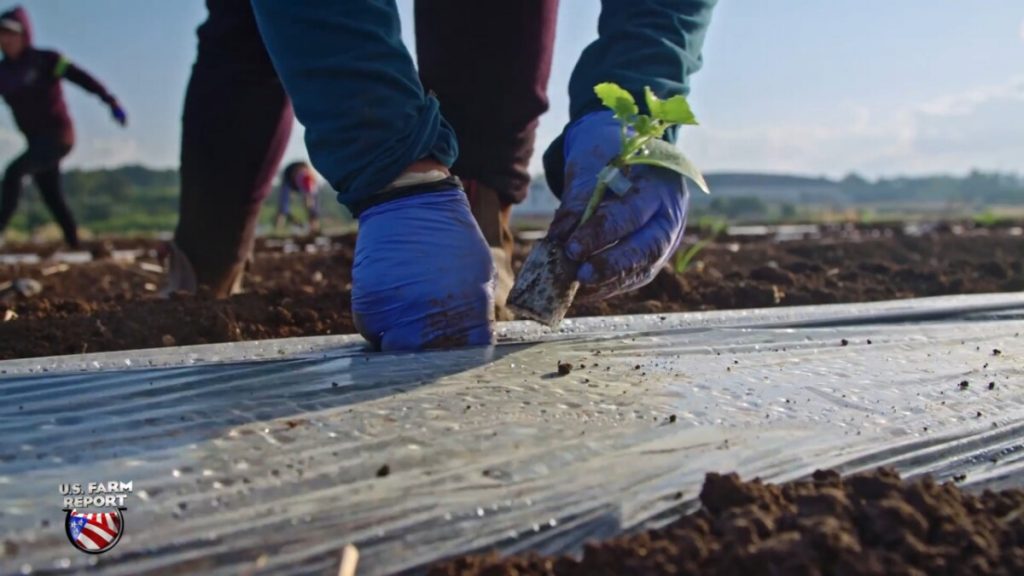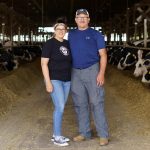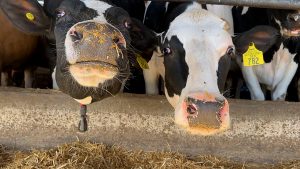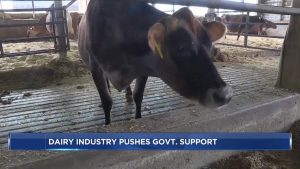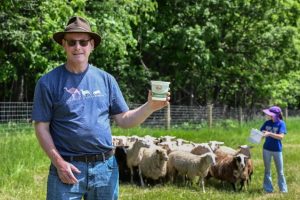
President Trump’s focus on mass deportation is creating a sense of nervousness that hasn’t been felt since the Obama Administration. Yet, the bigger concern is a H-2A system that’s become too costly for many farmers to use.
Situated on the west side of the San Joaquin Valley, Joe Del Bosque is a first-generation farmer in central California. The son of migrant workers, he conquered the American dream by starting his own farming operation in California in 1985.
“My father was a farm manager, so I grew up on a farm doing exactly what I’m doing today,” Del Bosque says.
He grows organic melons, including cantaloupes, honey dew and watermelons. He also grows organic processing tomatoes, as well as almonds and cherries. Del Bosque is one of the largest, if not the largest, melon grower for Whole Foods.
A Crop That Must Be Hand-Picked
Del Bosque says a lot has changed in his 40 years of running his own farm, but what hasn’t changed is the fact that most of what he produces on his operation has to be hand-picked.
“Melons are highly perishable,” he says. “When they’re ready, they’ve got to be picked.”
Del Bosque says if their crew would miss even a couple days of work, the farm would be at risk of losing a crop.
“The produce has to be picked by hand by people who can see the fruit. And these people are skilled and seeing ripe fruit and how to pick it,” he explains.
The Need for Seasonal Labor
Del Bosque and other California growers rely heavily on seasonal labor. His produce is ready to be harvested between June and October, and during those crucial months. Del Bosque relies on 150 seasonal employees to help pick the fruit.
“We have scaled back,” Del Bosque says. “I would say 6 or 8 years ago; we were at probably 300 to 350 employees.
Between water issues and the switch from conventional farming to organic, which reduced their acres, Del Bosque now employs half of what he did eight years ago. And still, one of his biggest challenges is finding enough labor.
“It’s not been easy, but we have found enough labor,” Del Bosque adds. “We try to focus mostly on local labor. That doesn’t mean they’re not immigrant labor; they are immigrants who just live locally.”
Mass Deportation Concerns
They also have crews that come from Arizona for just the season, but one thing they’re no longer able to do is find seasonal labor from Mexico that work for a few months and then return back home.
“During the Obama years, he tightened the border tremendously. And sometimes both people couldn’t come anymore. So that’s why we tried to focus more on getting people that were living permanently here in this country,” Del Bosque says.
That’s when the struggles with labor shortages started for Del Bosque and other farmers, with mass deportations in his own community.
“He tightened the border a tremendous amount,” he adds. “He deported more people than Trump and Biden put together. He departed almost 3 million people, which is a lot of people, during his two terms. I’ve heard that it was an average of 1,000 people per day. So, yes, labor got very tight then. That was when we felt probably the most of labor shortages and we lost fruit sometimes during those terms.”
As the Trump Administration took office, promises of immigration crackdown and mass deportations are back in the focus again.
According to the latest data from Statista, as of Feb. 5, the Trump administration had deported a total of 4,745 Latin American undocumented immigrants. Those individuals were returned to their country of origin and 4,094 of those deported were Mexican citizens.
With mass deportation back in focus again, Del Bosque says there’s a nervousness on farms, and in their rural communities, not felt since the Obama administration.
“There are no big cities. There are small towns of anywhere from 7 to 14,000 people. And those small towns are mostly farmworkers,” Del Bosque says. “And we would not be able to farm out here without these people.”
White House Says Ag Isn’t the Target
Stephen Miller, who serves as Deputy Chief of Staff for Policy and as Homeland Security, appeared on CNN, defending the President’s mass deportation plan and said the target isn’t agriculture.
“Only 1% of alien workers in the entire country work in agriculture. The top destination for illegal aliens is large cities like New York, Los Angeles and small industrial towns, of course, all across the heartland. None of those illegal aliens are doing farm work,” Miller says.
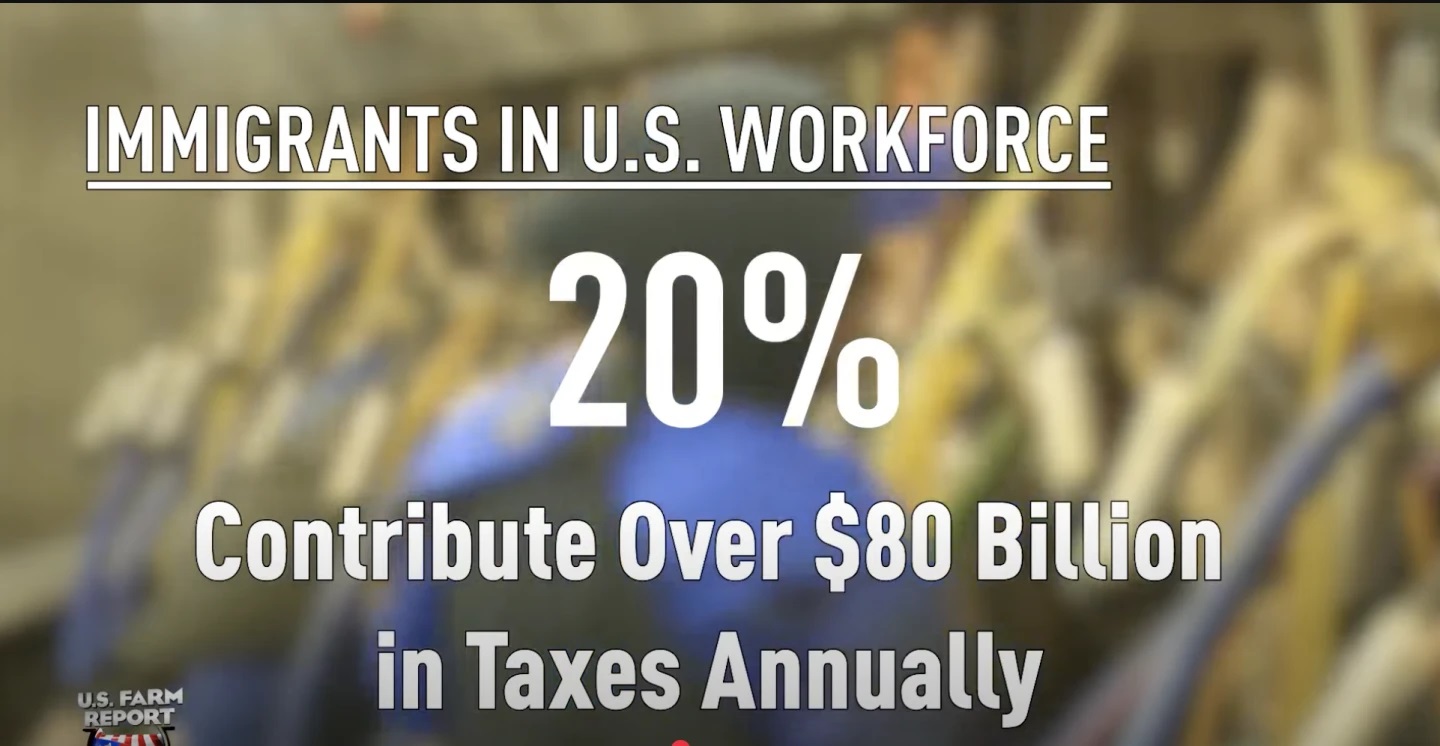
(Mike Byers )
According to the Bureau of Labor Statistics, immigrant workers comprise nearly 20% of the U.S. workforce, contributing more than $80 billion in taxes annually.
And with shortages of labor already, the concern is mass deportation of those immigrants who follow the law, could make that shortage worse and drive inflation.
Labor Shortages
Not having enough ag labor is problem farmers are dealing with all across the country. Just ask Marc Arnusch, who used to be one of the largest onion growers in the U.S.
“There was a morning where I came out into the field and I had 250 workers helping transplant a crop out of Arizona into a field here in Colorado. And the following day I had nine employees. You just can’t control a variable like that,” the Keenesburg, Colorado farmer told AgDay’s Clinton Griffiths.
At the time, Arnusch was one of the largest growers of onions, a crop that used as Blooming Onions in popular restaurants. But when labor become too lucrative, he decided to completely walk away from growing onions.
A Broken Immigration System
Grower after grower will tell you the immigration system in the U.S. doesn’t work for agriculture.
“It’s definitely broken,” Del Bosque says.
“We’re up at 40 years from not having passed comprehensive immigration reform in this country. And it sure doesn’t look like it’s going to happen in the next year,” says Mary Kay Thatcher, senior lead for federal government relations at Syngenta.
Thatcher says even if the U.S. doesn’t pass immigration reform, H-2A is becoming too expensive for many growers to even use.
“I have been hearing story after story in the hallways here about really good producers and strong competitors having to go out of business because they just can’t afford the new effective minimum wage rate along with the other mandates that get put on them, be it transportation cost or housing cost or whatever for H-2A,” she adds.
Del Bosque says they’ve never used H-2A, and one reason is because of the cost and all the other requirements involved.
“H-2A is very expensive to use. The minimum wage for H-2A is like $3 or $4 higher than our state. Minimum wage and our state minimum wage are $16. And the H-2A minimum wage is over 19. Think about that. The guest workers have to be paid more,” he adds
With required housing and food, Del Bosque says it’s becoming too expensive to even utilize H-2A in the U.S. today.
“Fruits and vegetables that we grow here are all handpicked. And if we can’t grow the produce here, then they’re going to have to be imported from somewhere else, maybe Mexico, maybe Chile” he says. “They’re going to have to be grown where there is labor. I don’t think Americans want that. I don’t think they want to have imported food, to be relying on other countries for their food supply.”
If you want your food grown in America, Del Bosque says you have to have the workforce to grow your food and harvest.
And he says that’s why all of agriculture, no matter where you live or what you grow, must be united.
“We’re a little minority as farmers,” Del Bosque adds. “We farmers don’t have an any political clout, neither here in California or anywhere else in the United States. We need to stick together.”
You can now read the most important #news on #eDairyNews #Whatsapp channels!!!
🇺🇸 eDairy News INGLÊS: https://whatsapp.com/channel/0029VaKsjzGDTkJyIN6hcP1K
